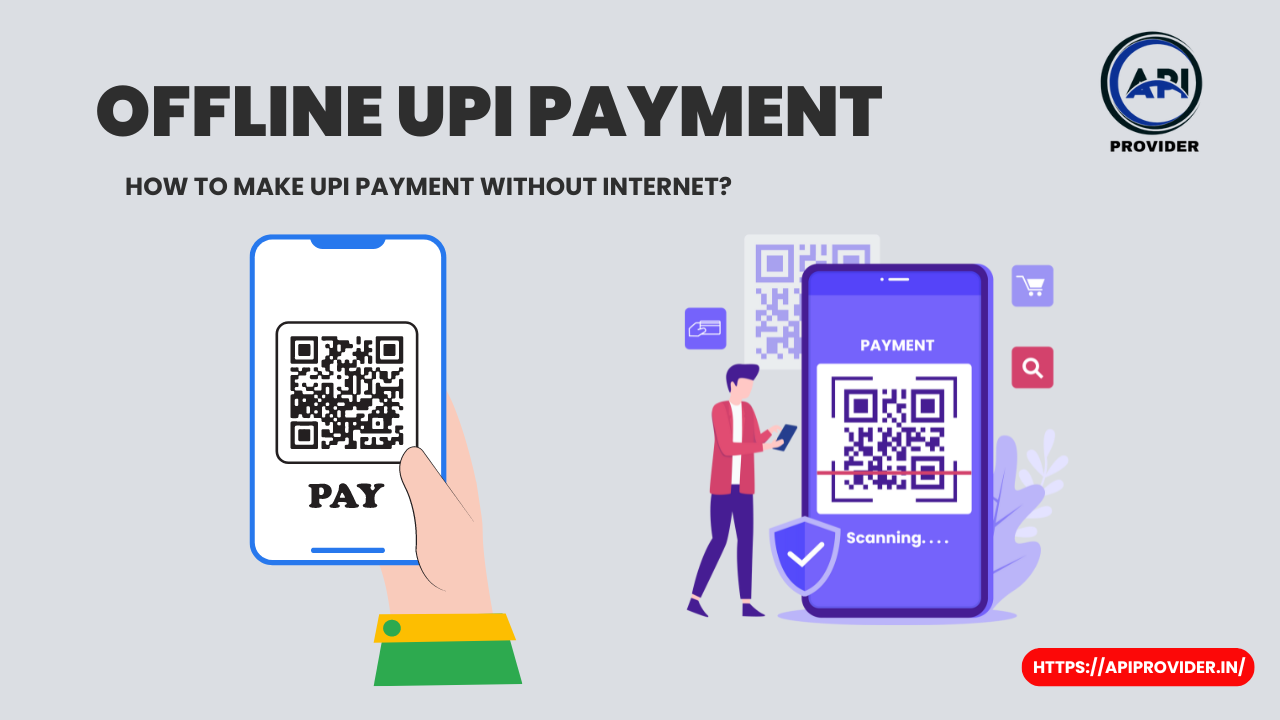Offline UPI Payment: Unified Payments Interface (UPI) has revolutionized the way we conduct financial transactions in India. With just a few taps on your smartphone, you can transfer money, pay bills, and shop online. But what if you don’t have access to the internet? That’s where offline UPI payment comes into play. Let’s dive into how you can make UPI payments without an internet connection and why it’s a significant change.

Understanding Offline UPI Payment
Definition and Purpose
Offline UPI payment allows users to perform financial transactions without needing an internet connection. This service is particularly useful in areas with poor internet connectivity or during internet outages. The primary goal is to make digital payments accessible to everyone, regardless of their internet availability.
Read More…
- Verify GST with API Provider: Streamlining Business
- A Comprehensive Guide to International Wire Transfers: ACH, SWIFT, SEPA, FPS
How Offline UPI Payment Works
Offline UPI payment works through USSD (Unstructured Supplementary Service Data) codes, missed call services, or SMS. These methods enable users to initiate and complete transactions using their mobile phones, making digital payments possible even without data connectivity.
Why Use Offline UPI Payment?
Accessibility in Remote Areas
In many parts of India, internet connectivity is still a luxury. Offline UPI payments ensure that people in remote areas can participate in the digital economy.
Convenience During Internet Outages
Internet outages can happen unexpectedly. Offline UPI payments provide a reliable alternative, ensuring that transactions can continue smoothly.
Enhanced Security Measures
Offline transactions can be more secure as they are less susceptible to online fraud and hacking attempts.
Methods of Making Offline UPI Payments
USSD Codes
One of the most common methods for offline UPI payments is using USSD codes. This method involves dialing a specific code on your mobile phone to initiate a transaction.
Missed Call Services
Some banks offer missed call services where you can make a transaction by giving a missed call to a specific number.
Using SMS
Another method is using SMS to send payment instructions. This involves sending a text message with specific details to a designated number.
Steps to Make UPI Payment Using USSD Codes
Dialing the USSD Code
To start, dial the USSD code provided by your bank or UPI service. For example, *99# is a common USSD code used for this purpose.
Navigating the Menu
Once the code is dialed, a menu will appear on your screen. This menu will guide you through the steps required to make the payment.
Entering Payment Details
Next, enter the payment details, including the recipient’s UPI ID, the amount to be transferred, and any other required information.
Confirming the Transaction
Finally, review the details and confirm the transaction. You will receive a confirmation message once the transaction is successfully completed.
Benefits of Using USSD Codes for UPI Payments
No Need for Internet Connection
The most significant advantage is that you don’t need an internet connection to make transactions, making it accessible to everyone.
Simple and User-Friendly
The process is straightforward and can be used by anyone, even those who are not tech-savvy.
Immediate Confirmation
Transactions are processed instantly, and you receive immediate confirmation, ensuring peace of mind.
Challenges and Limitations of Offline UPI Payments
Network Coverage Issues
While internet connectivity isn’t required, you do need mobile network coverage. In areas with poor network signals, this can be a challenge.
Transaction Limits
There are often limits on the amount you can transfer using offline methods, which might not be suitable for high-value transactions.
Potential Security Concerns
Though offline methods are generally secure, there is always a risk of USSD codes being intercepted if not properly encrypted.
Role of Banks in Facilitating Offline UPI Payments
Partnering with Telecom Providers
Banks collaborate with telecom providers to ensure that USSD services are available and reliable for their customers.
Enhancing Customer Support
Providing robust customer support is crucial to help users navigate the offline payment process and resolve any issues they may encounter.
Ensuring Seamless Integration
Banks work on integrating these services smoothly with their existing systems to provide a seamless experience for users.
Security Measures for Offline UPI Payments
Encryption and Authentication
Strong encryption and authentication measures are put in place to protect transactions from potential security threats.
User Awareness and Education
Banks and financial institutions educate users on the best practices for safe transactions, including not sharing their PIN or personal details.
Monitoring and Reporting Mechanisms
Continuous monitoring and prompt reporting mechanisms help detect and address any fraudulent activities quickly.
Real-Life Use Cases of Offline UPI Payments
Rural and Remote Area Transactions
People in rural areas use offline UPI payments for everyday transactions, such as buying groceries or paying for services.
Emergency Situations
During emergencies, when internet services may be disrupted, offline UPI payments provide a reliable alternative for conducting transactions.
Everyday Use in Urban Areas
Even in urban areas, offline UPI payments are handy during internet outages or when people are on the move without access to data.
Future of Offline UPI Payments
Technological Advancements
Technological advancements will continue to improve the efficiency and security of offline UPI payments, making them even more user-friendly.
Increasing Adoption and Awareness
As awareness grows, more people will adopt offline UPI payments, contributing to a more inclusive digital economy.
Regulatory Support and Guidelines
Supportive regulations and guidelines will ensure that offline UPI payments are safe, secure, and accessible to everyone.
Comparing Offline UPI Payment with Other Payment Methods
Offline UPI vs. Online UPI
Offline UPI payments are less dependent on internet connectivity, making them more accessible in certain situations.
Offline UPI vs. Cash Payments
Offline UPI payments are more secure and convenient compared to carrying cash, reducing the risk of theft or loss.
Offline UPI vs. Card Payments
While card payments require point-of-sale devices, offline UPI payments can be made directly from a mobile phone, providing greater flexibility.
Tips for a Smooth Offline UPI Payment Experience
Ensure Adequate Network Coverage
Make sure you are in an area with good mobile network coverage to avoid any interruptions.
Keep USSD Codes Handy
Save the USSD codes provided by your bank for quick access when needed.
Regularly Update Bank and UPI Details
Keep your bank and UPI details up to date to avoid any issues during transactions.
Common FAQs and Troubleshooting
Common Issues and Solutions
Encountering problems? Make sure you have entered the correct details and try again. If issues persist, contact customer support.
Whom to Contact for Support
Reach out to your bank’s customer service for assistance with offline UPI payment issues.
Safety Tips for Users
Never share your PIN or personal details with anyone. Always ensure your mobile phone is secure and up to date with the latest software.
Conclusion
Offline UPI payments are a revolutionary solution for ensuring financial transactions are accessible to everyone, regardless of internet availability. By understanding how to use these services and their benefits, you can make secure and efficient transactions anytime, anywhere. Embracing offline UPI payments is a step towards a more inclusive and resilient digital economy.
